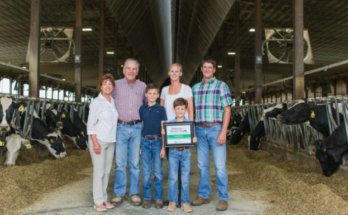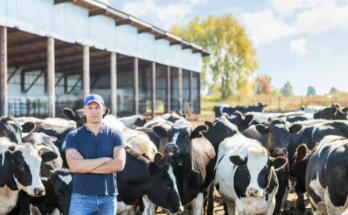Today, we continue to visit large-scale farms and fields in the United States to see how farmers harvest millions of tons of agricultural products including vegetables and fruits.

In recent years, U.S. farmers have been making significant strides in modernizing their harvesting and processing methods, which are now more efficient and sustainable than ever before. This shift is driven by the integration of advanced technologies and the increased availability of government programs designed to support innovation in agriculture. One key factor enabling this transformation is the U.S. government’s allocation of funding to assist farmers in adopting these new methods.
The U.S. Department of Agriculture (USDA) plays a crucial role in ensuring that farmers have access to the necessary resources for these advancements. Every year, the USDA releases billions of dollars in grants, loans, and subsidies to support farmers in improving their operations. These funds are earmarked for a variety of purposes, such as enhancing farm infrastructure, implementing precision farming technologies, and adopting sustainable farming practices. For instance, some of the financial support is aimed at helping farmers purchase modern harvesting equipment, like automated tractors and harvesters, which significantly reduce labor costs and time spent on the fields.
In addition to direct financial assistance, the government’s efforts include funding research and development in agricultural technology, which directly benefits the farmers who adopt these innovations. These programs not only help reduce the financial burden of purchasing new equipment but also encourage the adoption of more sustainable and environmentally friendly practices. With a growing focus on reducing carbon emissions and improving soil health, farmers are being incentivized to invest in technologies that minimize the environmental impact of farming.
Farmers have also benefited from various federal and state-level initiatives designed to ensure that they can remain competitive in the global market. For example, the release of budgetary support for renewable energy technologies, such as wind and solar, helps farms become more energy-independent and reduces long-term costs. Furthermore, the government regularly updates these programs to address changing market conditions, such as fluctuating commodity prices or unexpected disruptions in global trade. These timely adjustments ensure that farmers receive continued support, even during challenging economic periods.
The success of these initiatives is evident in the increasing number of farms adopting cutting-edge technologies. According to the USDA, a growing percentage of farms are now using GPS-guided machinery, drone technology, and other precision farming tools that improve crop yields, reduce waste, and make farming more efficient. Additionally, many farmers are turning to vertical farming and hydroponics, which allow them to process products like vegetables and herbs year-round, regardless of climate conditions.
Farmers also benefit from a wide range of online platforms and resources that connect them with farm management tools, real-time market data, and best practices. These platforms allow farmers to track their expenses, forecast production, and manage logistics more effectively, all of which are essential for staying competitive in the fast-evolving agricultural industry. Through these resources, farmers are better equipped to make informed decisions, streamline operations, and maximize the profitability of their farms.
In conclusion, the combination of government support, technological innovation, and digital resources has empowered U.S. farmers to increase efficiency, reduce costs, and improve the sustainability of their operations. With continued investments in these areas, farmers will be well-positioned to meet the challenges of the future while contributing to the nation’s food security and economic stability.



